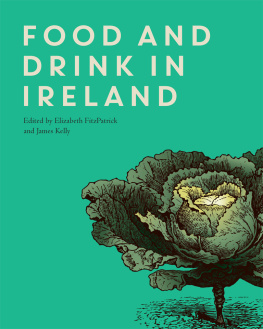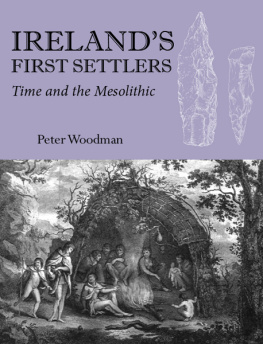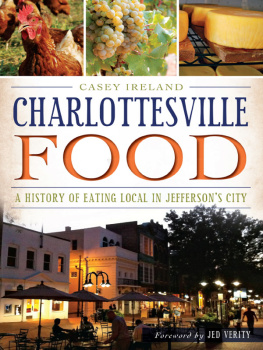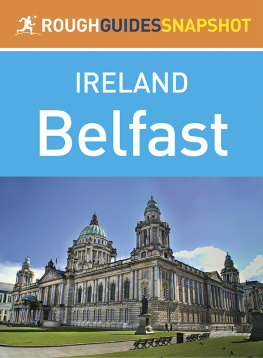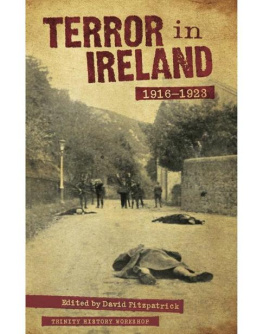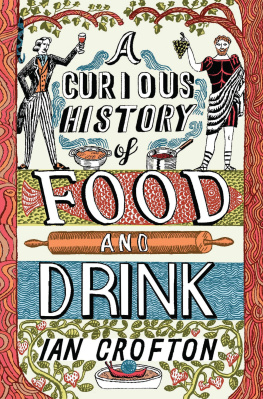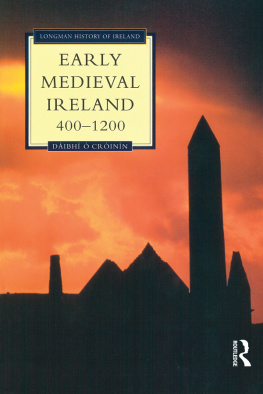Elizabeth FitzPatrick - Food and Drink in Ireland
Here you can read online Elizabeth FitzPatrick - Food and Drink in Ireland full text of the book (entire story) in english for free. Download pdf and epub, get meaning, cover and reviews about this ebook. City: Ireland, year: 2016, publisher: Royal Irish Academy, genre: Romance novel. Description of the work, (preface) as well as reviews are available. Best literature library LitArk.com created for fans of good reading and offers a wide selection of genres:
Romance novel
Science fiction
Adventure
Detective
Science
History
Home and family
Prose
Art
Politics
Computer
Non-fiction
Religion
Business
Children
Humor
Choose a favorite category and find really read worthwhile books. Enjoy immersion in the world of imagination, feel the emotions of the characters or learn something new for yourself, make an fascinating discovery.
- Book:Food and Drink in Ireland
- Author:
- Publisher:Royal Irish Academy
- Genre:
- Year:2016
- City:Ireland
- Rating:5 / 5
- Favourites:Add to favourites
- Your mark:
- 100
- 1
- 2
- 3
- 4
- 5
Food and Drink in Ireland: summary, description and annotation
We offer to read an annotation, description, summary or preface (depends on what the author of the book "Food and Drink in Ireland" wrote himself). If you haven't found the necessary information about the book — write in the comments, we will try to find it.
This multi-disciplinary collection of fourteen essays explores the collection, cultivation, consumption and culture of food and drink in Ireland from the beginnings of settlement in the Mesolithic to the present.
Food and Drink in Ireland — read online for free the complete book (whole text) full work
Below is the text of the book, divided by pages. System saving the place of the last page read, allows you to conveniently read the book "Food and Drink in Ireland" online for free, without having to search again every time where you left off. Put a bookmark, and you can go to the page where you finished reading at any time.
Font size:
Interval:
Bookmark:
FOOD AND
DRINK IN
IRELAND
Edited by Elizabeth FitzPatrick and James Kelly

First e-published in 2016 by
ROYAL IRISH ACADEMY
19 Dawson Street,
Dublin 2,
Ireland
www.ria.ie
ISBN 978-1-908997-10-4
Originally published in 2015 as Proceedings of the Royal Irish Academy, Section C, Volume 115.
Copyright Royal Irish Academy 2016
All rights reserved. No part of this publication may be reprinted or reproduced or utilised in any electronic, mechanical or any other means, now known or hereafter invented, including photocopying and recording, or otherwise without either the prior written consent of the publishers or a licence permitting restricted copying in Ireland issued by the Irish Copyright Licensing Agency Ltd, The Writers Centre, 19 Parnell Square, Dublin 1.
While every effort has been made to contact and obtain permission from holders of copyright, if any involuntary infringement of copyright has occurred, sincere apologies are offered, and the owner of such copyright is requested to contact the publisher.
Typesetting by Datapage International Ltd.
Printed in Ireland by Sprint-PRINT
Preface
Food and Drink is the second thematic volume to be published since the decision of the editorial board of Proceedings in 2007 to bring out an occasional thematic volume addressing a fundamental theme in Irish life. Like its predecessor, Domestic Life in Ireland (Proceedings of the Royal Irish Academy, 111C), which was published in 2011, the current volume favours the multidisciplinary approach that is one of the defining features of the journal. It aspires thereby to provide a forum for new ideas and for syntheses of established approaches and findings. In keeping with the remit and tradition of the journal to explore the Irish past in la longue dure, it addresses food and drink between the Mesolithic and the present.
As Stephen Mennells introduction to this collection points out, despite the long tradition of collecting and assembling recipes and the cultural potential of printed cookery books, awareness of the rich and revealing potential of the history of food and drink is a comparatively recent development. The decision of Louis Cullen in 1981 to devote two chapters in his vastly influential exploration of the emergence of modern Ireland to diet in a changing society and hospitality and men was crucial in this respect, because it brought food and diet into the Irish historical mainstream.
This is a most important development because for all their intrinsic interest as subjects in their own right, food and drink are still more revealing archaeologically and historically of the societies, peoples and eras in which they are located when they are appealed to amplify and to illuminate broader societal behaviours and tendencies. This is something that Irish archaeology does particularly well. The archaeological essays in this volume introduce several new themes around food-related behaviour and culinary material culture, supported by innovative theoretical frameworks and breakthroughs in scientific methodologies. Complexity has been recognised as a feature of Mesolithic diets and foodways, with belief exercising an influence on food consumption and identified in the archaeological record as specific rituals and patterns of discard. The potential of stable isotope analysis on lipid residues has been realised in its initial application to Irish Neolithic ceramic vessels. This method has revealed that vessels were used mainly to process dairy fats and other foodstuffs, thereby providing new insights into diet and food procurement among the earliest farming communities on the island and marking a beginning to the research journey needed to understand more fully the place of food and drink in prehistory. The fact that Ireland was the most prominent user of pyrolithic technology during the Bronze Age, as evidenced in the extensive survival of burnt mounds or fulachtai fia in the Irish landscape, has encouraged new thinking about social bonding during that period. The image presented is one of small family groups food-sharing and hosting feasts around these cooking sites.
Sophisticated ways of thinking about foodways in medieval Irish society show that there was restricted access to particular foods based on grade and status. The Middle Irish law tracts of the seventh and eighth centuries enshrined those proscriptions, while in the period 11001600 access to hunted foods such as red deer, fallow deer, hare, rabbit and wild pig was a marker of status and means of mediating social relationships. Where plant foods are concerned, archaeobotanical research has confirmed an abundance of native seasonal fruits in the Irish urban medieval diet and some of the earliest physical evidence for imported exotic foodstuffs such as fig, grape and walnut. It has proven to be groundbreaking too in recognising chronological and geographical variation in crop use which otherwise cannot be gleaned from documentary sources.
The social meaning that can be derived from food research has also been demonstrated by historians working in other jurisdictions. The significance and impact of Rebecca Spangs reconstruction of the invention of the restaurant in late eighteenth-century France has served not only to illuminate the emergence of one emblematical modern institution in a new and novel way, but also to encourage greater inquiry into the concept of public and private space which is central to the influential interpretative models associated with Jrgen Habermas and Norbert Elias. This is not an arena with which the essays in this volume engage directly, for the simple reason that insufficient work has yet been completed to permit the application of a purely theoretical approach, and because of the utility of an empirical methodology. Yet all contributors eschew simple reconstruction in favour of an attempt to relate consumption, be it of food or drink, which provides the collection with its thematic frame of reference, to the social world in which they occur, and to engage in new and novel ways with the evidential record that remains. Mention has already been made of the usefulness of official inquiries for the reconstruction of diet and consumption patterns in the nineteenth and twentieth centuries. Prior to this period, outside of a handful of carceral institutions, the state seemed little interested in what people consumed, but this does not mean that diet is a subject closed off to inquiry. The analyses ventured by Madeline Shanahan and Regina Sexton of receipt books permits a revealing investigation of diet and dining patterns that underlines the extent to which early modern Ireland conformed to British and European norms, and how this and other forms of evidence allow us to identify how deeply these dining patterns percolated societally. The value of the press as a source, both for public (restaurant) dining and the varieties of alcohol that were available for purchase in the eighteenth century offers another reminder of the responsiveness of even the most ostensibly unpromising sources to focused interrogation, and of the dramatic shifts in diet that have occurred across the millennia that people have lived and consumed on this island.
It may be that for many it is the explanation of the current patterns of preparation and consumption that are of most immediate interest. There is, to be sure, much to ponder in the emergence of tea as the most popular liquid consumable, of the rise and fall and rise again of various varieties of alcohol (wine, beer and whiskey most obviously, but also rum, port and gin) consumption, but these cannot be separated from the emergence of the restaurant, which is explored by Mirtn Mac Con Iomaire, and the emergence of the kitchen as a separate defined space in the twentieth century, which is the subject of Rhona Richman Kenneallys contribution. And, of course, there is the symbolic and sociable use of food and drink. The centrality of the public and alcohol to homo-sociability in modern Ireland is acknowledged in Diarmaid Ferriters essay. What is less well established is its centrality to patterns of behaviour with roots deep in the early modern period, in patterns of public commemoration and private sociability. This is considered by James Kellys essay, which expands on the historiography which had established that sociable feasting was integral to the medieval world.
Next pageFont size:
Interval:
Bookmark:
Similar books «Food and Drink in Ireland»
Look at similar books to Food and Drink in Ireland. We have selected literature similar in name and meaning in the hope of providing readers with more options to find new, interesting, not yet read works.
Discussion, reviews of the book Food and Drink in Ireland and just readers' own opinions. Leave your comments, write what you think about the work, its meaning or the main characters. Specify what exactly you liked and what you didn't like, and why you think so.

